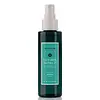What's inside
What's inside
 Key Ingredients
Key Ingredients

 Benefits
Benefits

 Concerns
Concerns

No concerns
 Ingredients Side-by-side
Ingredients Side-by-side

Aloe Barbadensis Leaf Juice
Skin ConditioningRosa Damascena Flower Water
MaskingGlycerin
HumectantBetaine
Humectant1,2-Hexanediol
Skin ConditioningPanthenol
Skin ConditioningAscorbic Acid
AntioxidantTocopheryl Acetate
AntioxidantSodium Hyaluronate
HumectantSodium Benzoate
MaskingPanax Ginseng Root Extract
EmollientCamellia Sinensis Leaf Extract
AntimicrobialAllantoin
Skin ConditioningHamamelis Virginiana Water
AstringentCucumis Sativus Fruit Extract
EmollientLactic Acid
BufferingChamomilla Recutita Flower Extract
MaskingCitrus Paradisi Seed Extract
MaskingPolyglyceryl-4 Oleyl Ether
EmulsifyingOleic Acid
EmollientPelargonium Graveolens Flower Oil
MaskingCitrus Aurantium Dulcis Peel Oil Expressed
PerfumingAloe Barbadensis Leaf Juice, Rosa Damascena Flower Water, Glycerin, Betaine, 1,2-Hexanediol, Panthenol, Ascorbic Acid, Tocopheryl Acetate, Sodium Hyaluronate, Sodium Benzoate, Panax Ginseng Root Extract, Camellia Sinensis Leaf Extract, Allantoin, Hamamelis Virginiana Water, Cucumis Sativus Fruit Extract, Lactic Acid, Chamomilla Recutita Flower Extract, Citrus Paradisi Seed Extract, Polyglyceryl-4 Oleyl Ether, Oleic Acid, Pelargonium Graveolens Flower Oil, Citrus Aurantium Dulcis Peel Oil Expressed
Ingredients Explained
These ingredients are found in both products.
Ingredients higher up in an ingredient list are typically present in a larger amount.
Aloe Barbadensis Leaf Juice comes from leaves of the aloe plant. Aloe Barbadensis Leaf Juice is best known for helping to soothe sunburns. It is also anti-inflammatory, moisturizing, antiseptic, and can help heal wounds.
Aloe is packed with good stuff including Vitamins A, C, and E. These vitamins are antioxidants, which help fight free-radicals and the damage they may cause. Free-radicals are molecules that may damage your skin cells, such as pollution.
Aloe Barbadensis Leaf Juice also contains sugars. These sugars come in the form of monosaccharides and polysaccharides, folic acid, and choline. These sugars are able to help bind moisture to skin.
It also contains minerals such as calcium, 12 anthraquinones, fatty acids, amino acids, and Vitamin B12.
Learn more about Aloe Barbadensis Leaf JuiceSodium Benzoate is a preservative. It's used in both cosmetic and food products to inhibit the growth of mold and bacteria. It is typically produced synthetically.
Both the US FDA and EU Health Committee have approved the use of sodium benzoate. In the US, levels of 0.1% (of the total product) are allowed.
Sodium benzoate works as a preservative by inhibiting the growth of bacteria inside of cells. It prevents the cell from fermenting a type of sugar using an enzyme called phosphofructokinase.
It is the salt of benzoic acid. Foods containing sodium benzoate include soda, salad dressings, condiments, fruit juices, wines, and snack foods.
Studies for using ascorbic acid and sodium benzoate in cosmetics are lacking, especially in skincare routines with multiple steps.
We always recommend speaking with a professional, such as a dermatologist, if you have any concerns.
Learn more about Sodium BenzoateSodium Hyaluronate is hyaluronic acid's salt form. It is commonly derived from the sodium salt of hyaluronic acid.
Like hyaluronic acid, it is great at holding water and acts as a humectant. This makes it a great skin hydrating ingredient.
Sodium Hyaluronate is naturally occurring in our bodies and is mostly found in eye fluid and joints.
These are some other common types of Hyaluronic Acid:
Learn more about Sodium Hyaluronate